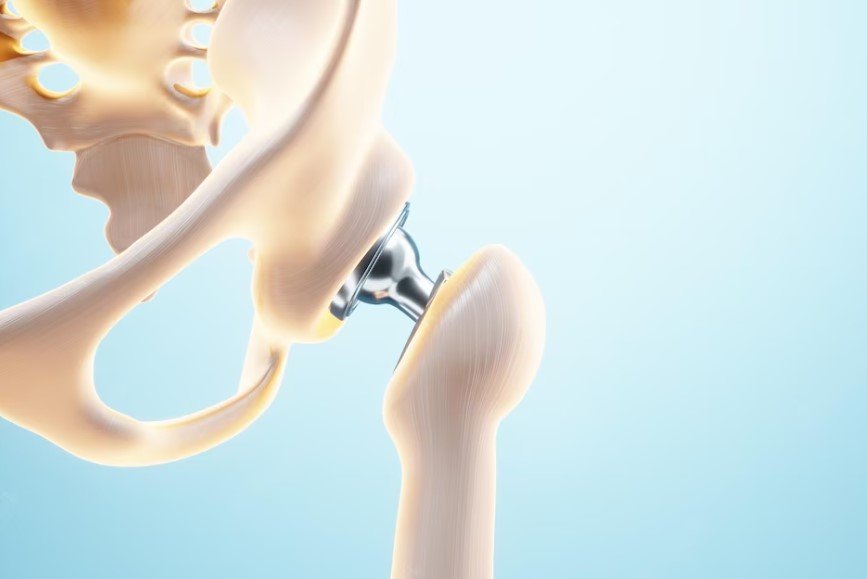
What is Hip Replacement? Total Hip Replacement Surgery
Hip replacement In surgery, a surgeon removes the damaged parts of your hip joint and replaces them with parts usually made of metal, ceramic and very hard plastic. This artificial joint (prosthesis) helps to reduce pain and improve function.
Total hip arthroplasty Hip replacement surgery, also called hip replacement surgery, may be an option for you if your hip pain interferes with daily activities and non-surgical treatments have not helped or are no longer effective. Arthritis damageis the most common reason for needing a hip replacement.
Conditions that can damage the hip joint and sometimes make hip replacement surgery necessary include
- Calcification. Osteoarthritis, commonly known as wear and tear arthritis, damages the slippery cartilage that covers the ends of bones and helps joints move smoothly.
- Rheumatoid arthritis. An overactive immune system rheumatoid arthritisproduces a type of inflammation that can erode cartilage and sometimes the underlying bone, causing damaged and deformed joints.
- Osteonecrosis. If there is not enough blood supply to the ball of the hip joint, which can result from a dislocation or fracture, the bone can collapse and deform.
If you have hip pain, you may want to consider hip replacement:
- Persists despite pain relief
- Worsens when walking even with a cane or walker
- Interferes with your sleep
- Makes it difficult to get dressed
- Affects your ability to walk up stairs
Risks of hip replacement surgery
Risks associated with hip replacement surgery may include
- Blood clots. After surgery, clots can form in your leg veins. This can be dangerous because a clot fragment can break off and travel to your lung, heart or, rarely, your brain. Your doctor may prescribe blood thinners to reduce this risk.
- Infection. Infections can occur at the incision site and in the deeper tissue near your new hip. Most infections are treated with antibiotics, but a large infection near your prosthesis may require surgery to remove and replace it.
- Broken. Healthy parts of your hip joint may break during surgery. Sometimes the fractures are small enough to heal on their own, but larger fractures may need to be stabilized with wires, screws and possibly a metal plate or bone graft.
- Dislocation. Some positions, especially in the first few months after surgery, can cause the ball of your new joint to come out of the socket. If the hip dislocates, your doctor may fit you with a brace to keep the hip in the correct position. If your hip continues to dislocate, surgery is usually needed to fix it.
- Change in leg length. Your surgeon takes steps to avoid the problem, but sometimes a new hip makes one leg longer or shorter than the other. Sometimes this is caused by contracture of the muscles around the hip. In this case, gradually strengthening and stretching these muscles can help. You are unlikely to notice small differences in leg length after a few months.
- Relaxation. Although this complication is rare with new implants, your new joint may not be securely fixed to your bone or may loosen over time, causing pain in your hip. Surgery may be needed to fix the problem.
- Nerve damage. Rarely, the nerves in the area where the implant is placed can be injured. Nerve damage can cause numbness, weakness and pain.
Need for a second hip replacement
Your prosthetic hip joint can eventually wear out, especially if you have hip replacement surgery when you are relatively young and active. Then you may need a second hip replacement. But new materials make the implants last longer.
Surgery
The surgical procedure takes a few hours. Your surgeon to perform a hip replacement:
- Makes an incision in the front or side of your buttock through layers of tissue
- Removes diseased and damaged bone and cartilage, leaving healthy bone intact
- Implants the prosthetic socket into your pelvic bone to replace the damaged socket
- Replaces the round ball at the top of your thigh bone with a prosthetic ball attached to a stem that fits your thigh bone
- Hip replacement techniques are constantly evolving. Surgeons continue to develop less invasive surgical techniques that can reduce recovery time and pain.
After surgery
After surgery, you will be moved to a recovery area for a few hours while your anesthesia wears off. Medical staff will monitor your blood pressure, pulse, alertness, pain or comfort level and the need for medication.
Some people can go home the same day, but most are hospitalized for one or two nights. You will be asked to breathe deeply, cough or blow into a device to help keep the fluid out of your lungs.
Blood clot prevention
After your surgery, there will be an increased risk of blood clots in your legs. Possible measures that can be taken to prevent this complication include
- Immediately after surgery you will be encouraged to sit up and walk with crutches or a walker. This will probably happen on the same day as your surgery or the next day.
- Both during and after surgery, you can wear elastic compression stockings or inflatable air sleeves similar to a blood pressure cuff on your lower legs. The pressure exerted by the inflated sleeves helps prevent blood from pooling in the leg veins, reducing the chance of clots forming.
- Blood thinners. Your surgeon may prescribe injected or oral blood thinners after surgery. Depending on how quickly you walk, how active you are and your overall risk of blood clots, you may need blood thinners for several weeks after surgery.
Physical Therapy
The physiotherapist can help you with exercises you can do in the hospital and at home to speed up recovery.
Activity and exercise should be a regular part of your day to regain your joints and muscles. Your physiotherapist will recommend strengthening and mobility exercises and help you learn how to use a walking aid such as a walker, cane or crutches. As therapy progresses, you will usually increase the weight you put on your leg until you can walk unaided.
Recovery and care at home
Before you leave the hospital, you and your caregivers will receive tips on caring for your new hip. For a smooth recovery:
- Have a friend or relative prepare a meal for you
- Place everyday items at waist level so you don't have to bend or reach
- If you usually have a low toilet, consider making some changes to your home, such as getting a raised toilet seat.
- Put the things you need, such as your phone, TV remote, medicines and books, near the area where you will spend most of your time during recovery
Six to 12 weeks after surgery, you will have a follow-up appointment with your surgeon to make sure your hip is healing properly. If healing is progressing well, most people resume at least some of their normal activities by this time. Further recovery with strengthening usually takes place over six to 12 months.


Contact
We are at your service 24/7
Error: Contact form not found.
Patient Satisfaction
Beautiful thoughts from all of you
If you're looking for car insurance, we will help you to find the You bring emendous value to company. We have generated more leads in the last

Farhan Smith Health Mentor
If you're looking for car insurance, we will help you to find the You bring emendous value to company. We have generated more leads in the last

Elwin Dawson Medical Specialist
If you're looking for car insurance, we will help you to find the You bring emendous value to company. We have generated more leads in the last

Poral Dawson Home Nurse
If you're looking for car insurance, we will help you to find the You bring emendous value to company. We have generated more leads in the last


